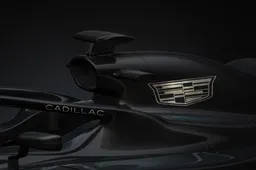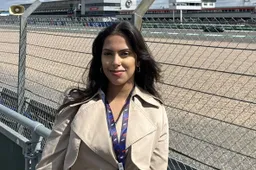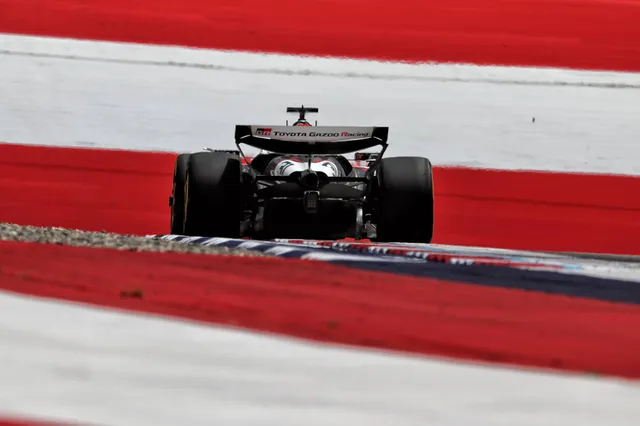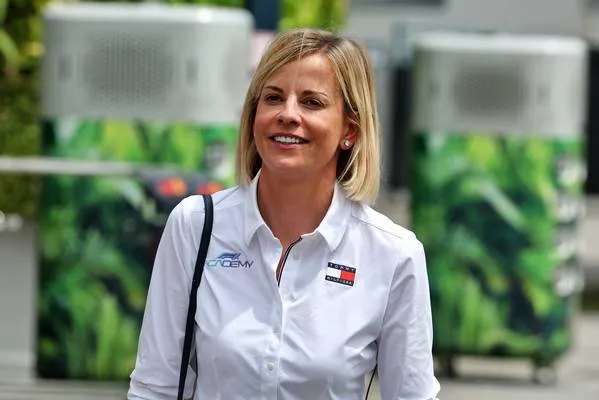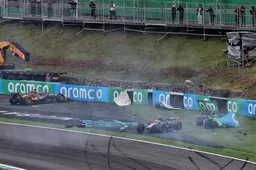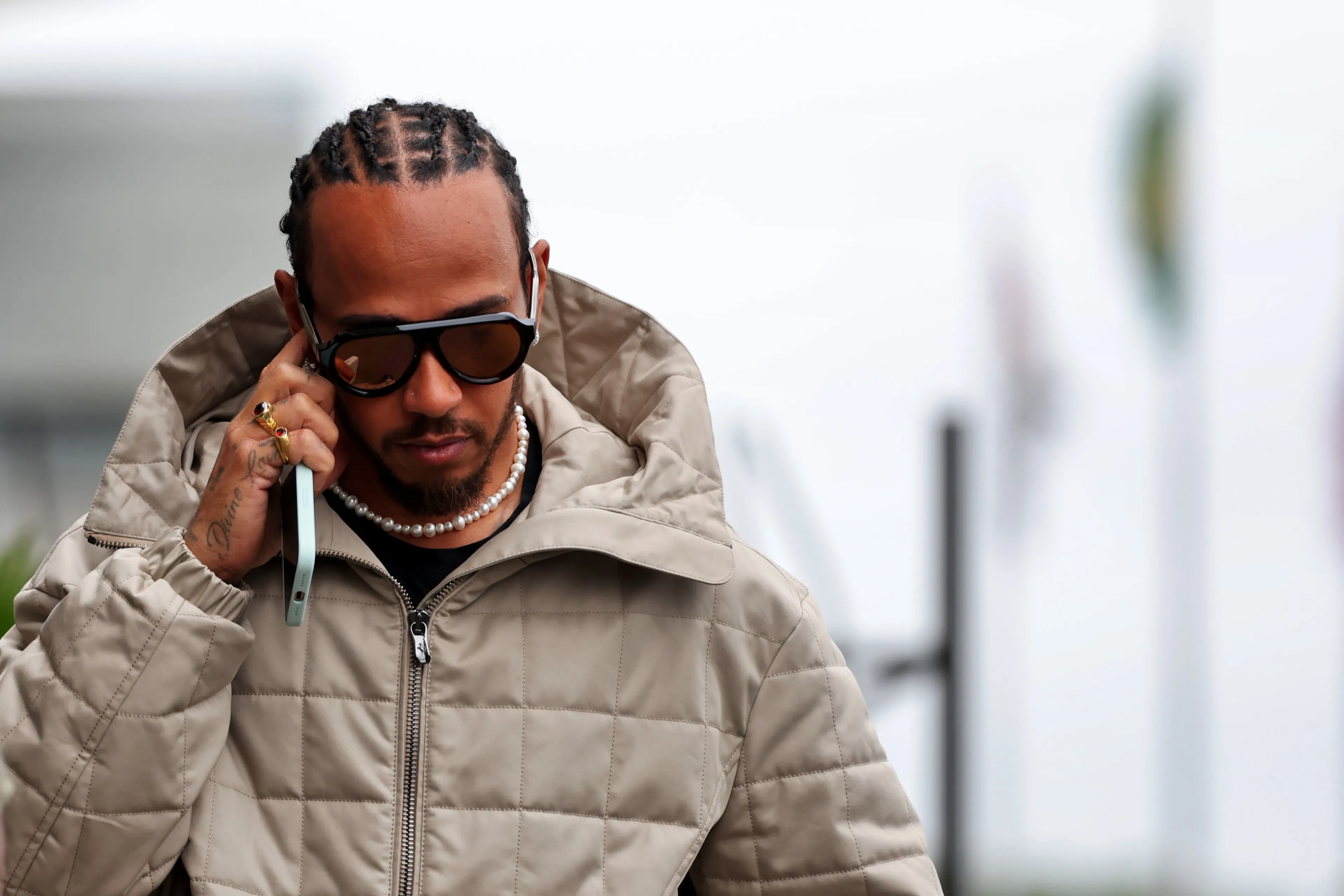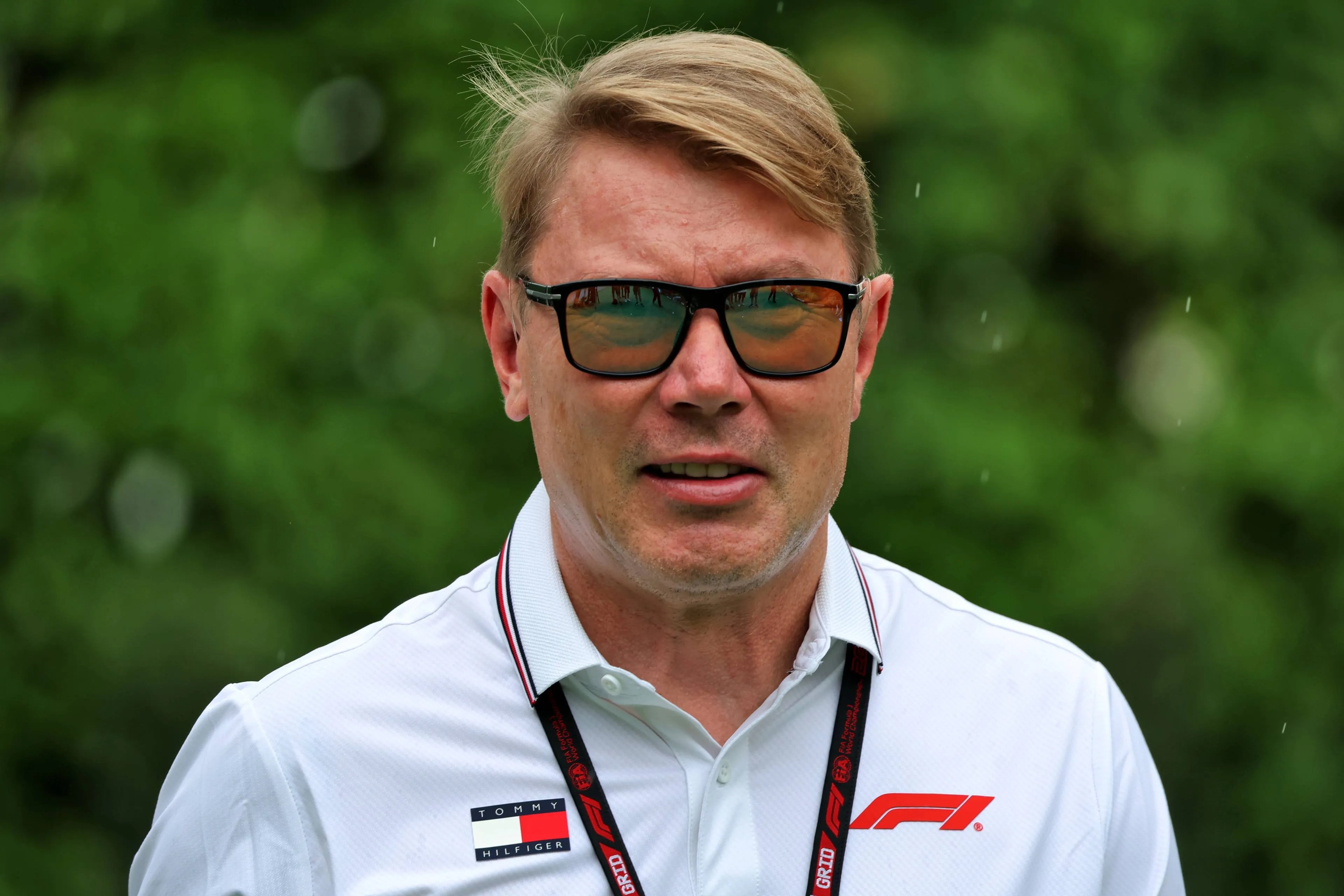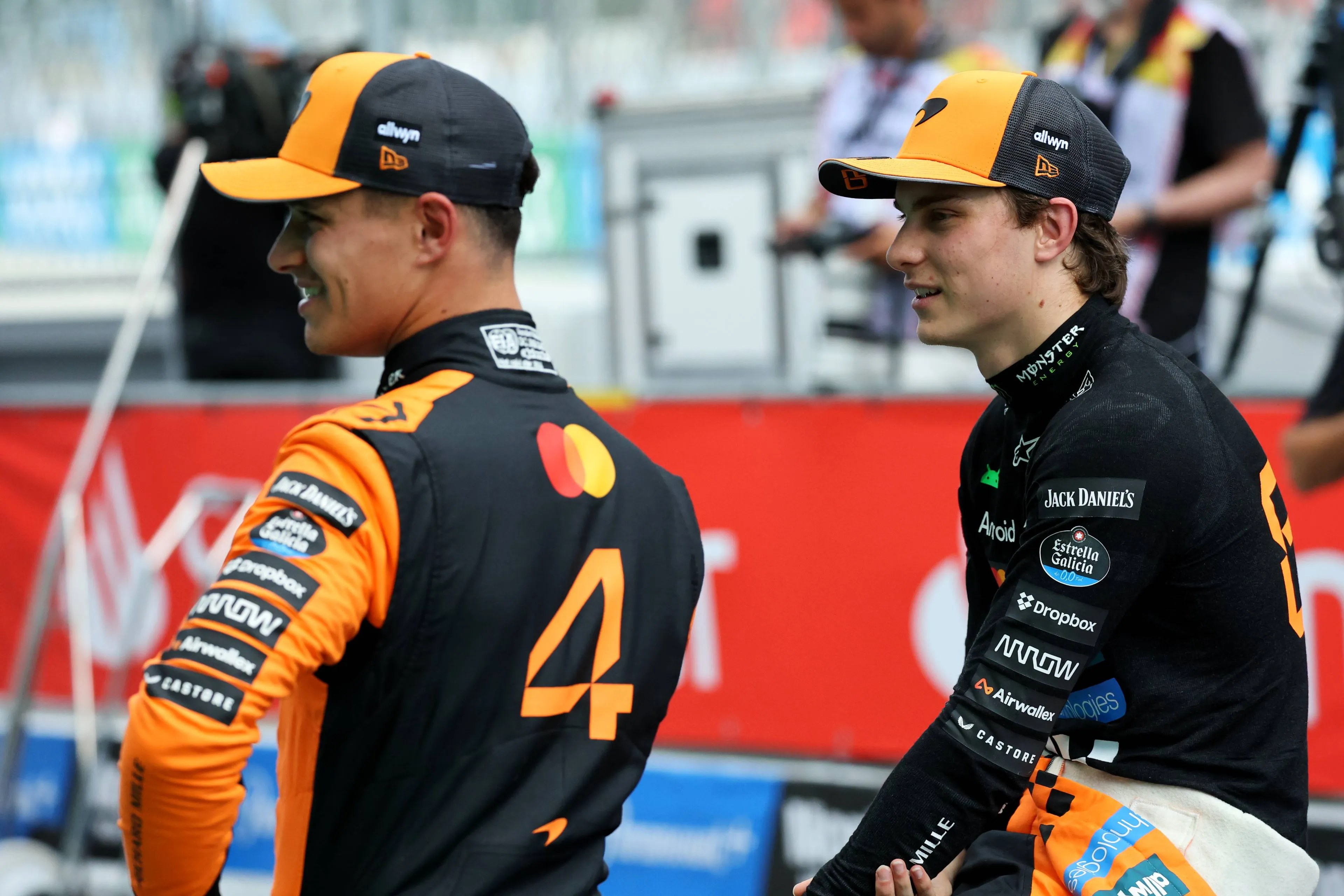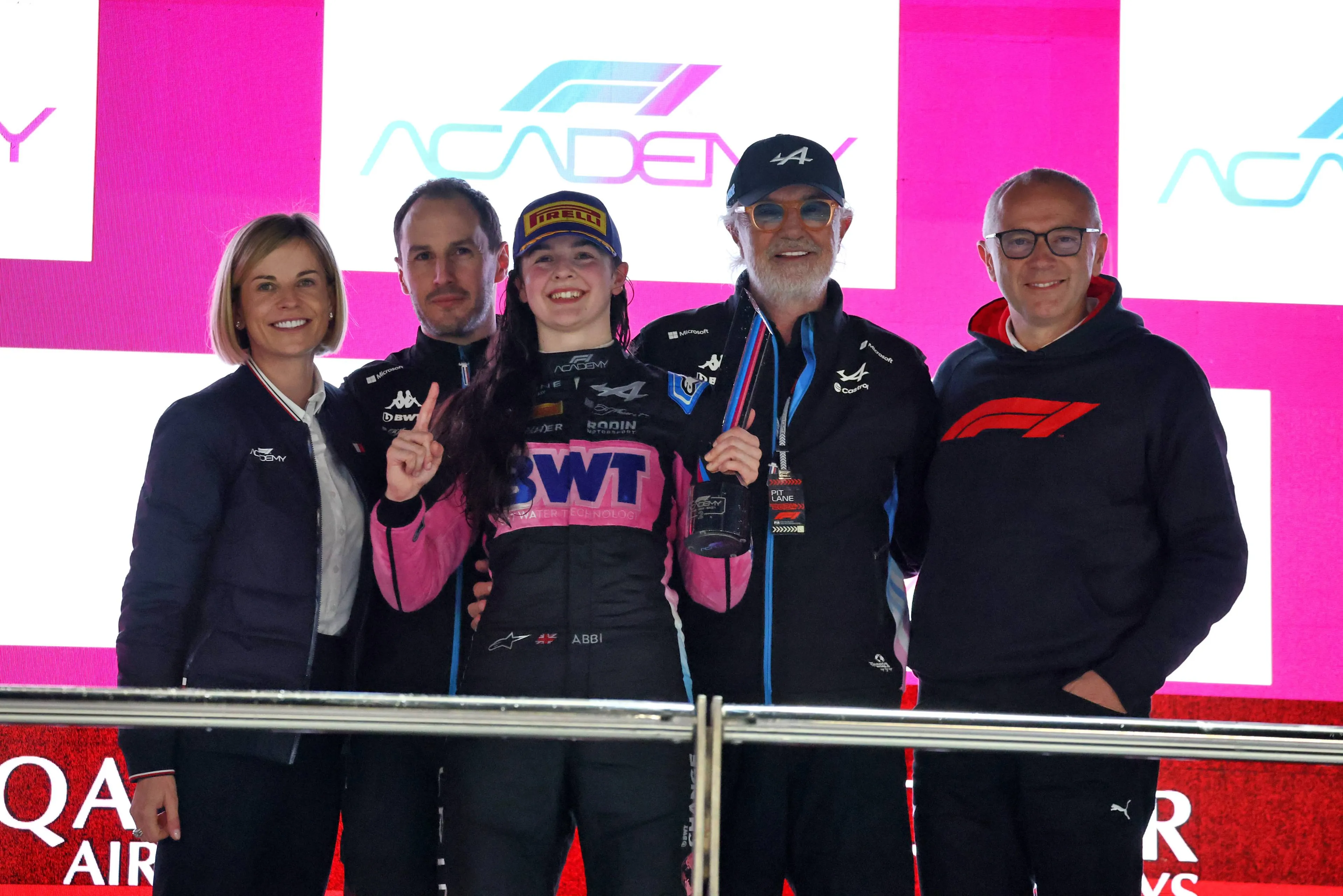
Formula 1 is taking the next step with F1 Academy in 2026
Formula 1 has announced a multi-year extension of its partnership with F1 Academy, with all 10 F1 teams vowing to continue backing the all-female feeder series.
Following a successful season, F1 Academy will embark on a fourth season with further backing from Formula 1 teams and some regulation changes.
As it stands, each Formula 1 team sponsors an F1 Academy driver financially and through their livery, with some teams adopting drivers into their junior driver academies.
The series will now also allow some drivers to race for a third season, rather than capping participation at just two seasons.
With Cadillac joining the Formula 1 grid next season, the F1 Academy grid will benefit from two extra drivers and sponsorship.
F1 Academy managing director Susie Wolff said: "The commitment of long-term support from all 10 current Formula 1 teams, and the addition of Cadillac to our grid from 2027, sends a powerful message about the future of F1 Academy.
"We’re not just providing a platform for the current generation of female drivers; together, we’re building a pathway to support generations of talent to come.
"We continue to be impressed by the depth of female talent coming out of the world of karting and are encouraged by the growth and strength of the emerging talent pool.
"A sharpened focus on individualised talent development, including the opportunity for drivers with high potential to compete in up to three seasons, will give stand-out drivers the support and platform needed to fully realise their potential, while ensuring that the F1 Academy grid consistently features the very best female talent.”
Read also
How has F1 Academy developed over time?
The all-female single-seater series had its roots in W Series, a female-only series designed to help women progress into motorsport.
However, W Series was short-lived due to financial struggles amidst the Covid-19 pandemic and lack of backing from sponsors.
W Series drivers, including Marta Garcia, the inaugural F1 Academy champion, migrated to F1 Academy and enjoyed success.
F1 Academy is unique in the sense that it caters to upcoming drivers from the ages of 16-25, with the goal of pushing these young drivers towards other feeder series as time goes on.
It is not a series intended to compete with Formula 3 or Formula 2, as it uses a Formula 4-based Tatuus T421 carbon-fibre chassis.
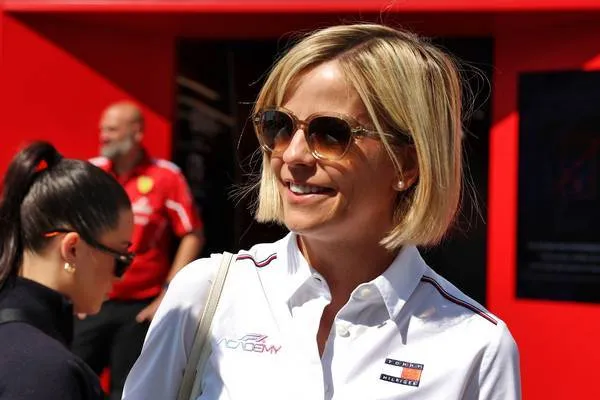
The first season had its fair share of struggles, with fans unable to watch live feeds of the races due to the series not having a broadcast deal.
Drivers have had to contribute €150,000 (£85,000) individually towards their entry fees and season costs, which can be supported by Formula 1 teams.
The second season saw Formula 1 step up and sponsor the series, adding it to its support series calendar, allowing fans to watch F1 Academy live alongside F1 races.
Formula 1 committed to giving the series €2.25 million (£1.91 million) in funding, as well as the support from each team competing in F1.
Last season, Abbi Pulling clinched the championship and joined the Alpine junior driver programme, migrating to the British Formula 4 championship.
Her runner-up, Doriane Pin, is now engaging in a battle with Ferrari junior driver Maya Weug, and the two drivers are on their final chance of racing in F1 Academy due to the two-season limit.
The final race of the season is set to take place during the Las Vegas Grand Prix weekend, with the title fight going down to the chequered flag.
GPblog's latest F1 Paddock Update
Want to stay up-to-date with what happens in the F1 paddock? Then GPblog's F1 Paddock Update video is the perfect way to do it. Subscribe to GPblog's YouTube channel and turn on notifications to never miss the latest episodes.
Popular on GPBlog

2025 Formula 1 season extended: all teams postpone their holidays

Red Bull faces new European Commission investigation

Ferrari advised to listen to Hamilton to turn things around
